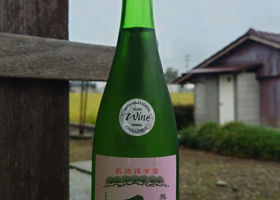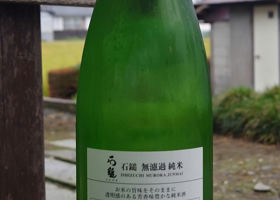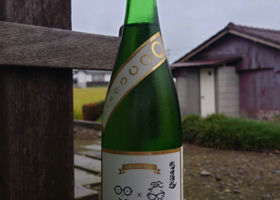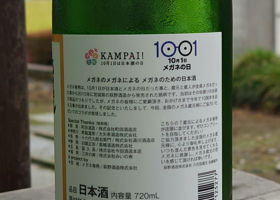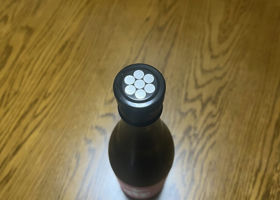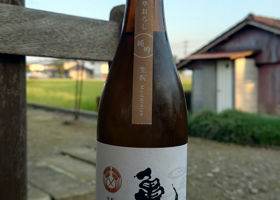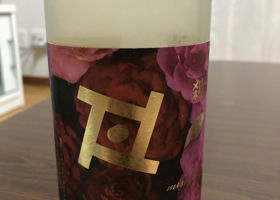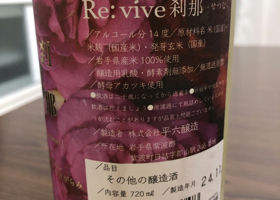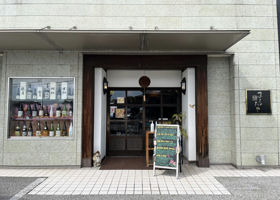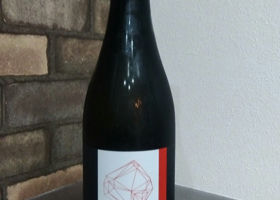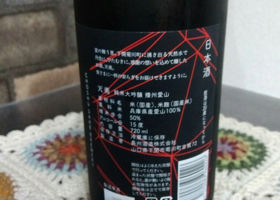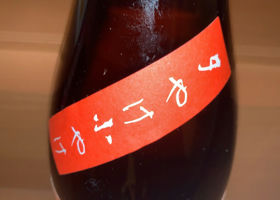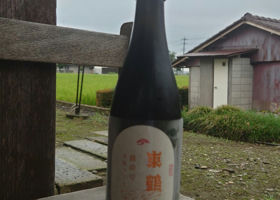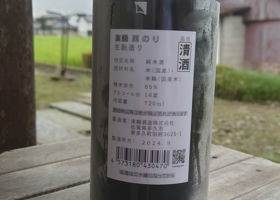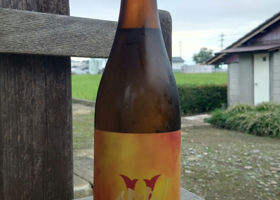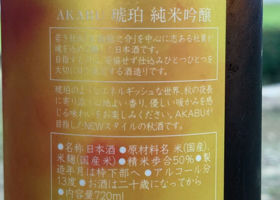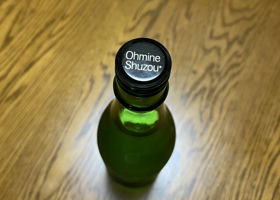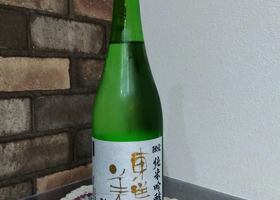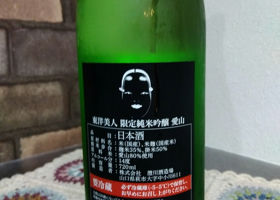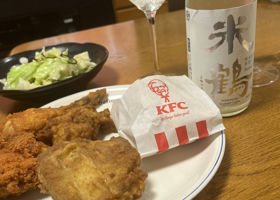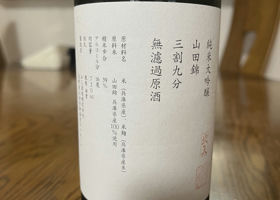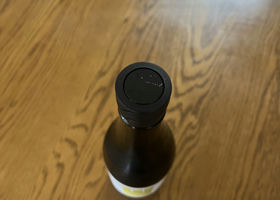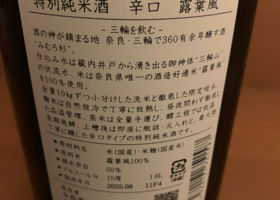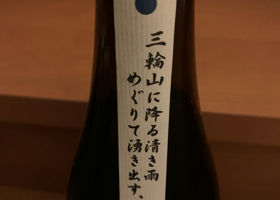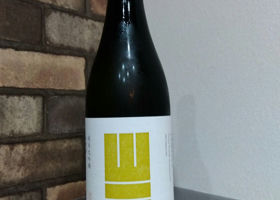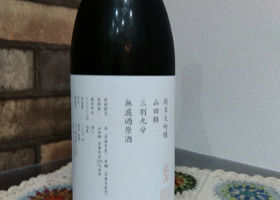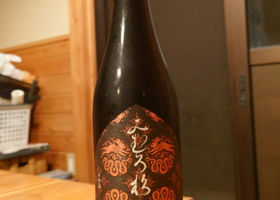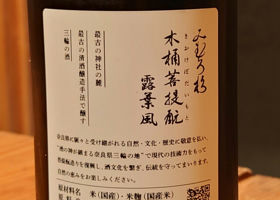Timeline

ジェイ&ノビィHere's a drink from about two weeks ago😅
I wanted to stock up on 13 degrees and here's what Nobby got! This is our second bottle of Nanayo and this time it's a pink label with a hint of sweetness: ‼️
Let's see what the international J&N standards say about it 🤗.
I'll make love to you!
The aroma is peachy with the pink label!
The first sip is a gentle, sweet and sour taste, not too sweet, but light and easy to drink 😙.
It is a very safe wine that meets J&N's standards.
By the way, after the Dodgers won the district series against the Phillies this weekend ⚾I was so excited to see the Japanese players play so well 😍I hope they can keep up their momentum to become the number one team in the world!
Let's continue where we left off last time!
Everyone's idol was discharged from the hospital suddenly 😆 but there is a fear that his blood pressure may drop when he stands up and he needs to be watched over by his family for a while 🤔.
So Nobby went to Ichikawa to take care of her for the week at the end of September 🥺.
She took on a very difficult role, almost unable to go out, and I was away and unable to do anything 😓I really can't thank my sister and Nobby enough for their dedicated support 😌.
And... my father who almost doesn't remember it 😅 he is recovering like a liar with a face like 😳 that I don't remember that happening 😄. KanoGood evening Jay & Nobby😊.
You remind me of my father 😂.
He was also a man who never gave a damn about other people's hardships 😊.
But while you can be filial to your parents, you should do as much as you can with the change you have 😄. ひなはなママGood evening, Jay & Nobby😄.
Your father has been through a lot. Mr. Nobby is a devoted caregiver. Jay must take good care of such a wife! People are only happy when they support each other 🥰Noby is a god ✨. ぼうすけGood evening, Jay & Nobby 🌙.
Thank you all for your respective efforts.
Is your father relieved for the time being😊.
Jay's Buddha's personality is also thanks to Nobby 😁. AAJIJay & Nobby Good evening. I'm sorry to hear about your father's troubles. I hope his blood pressure stabilizes. I don't know much about the situation, but if he could learn to stand up slowly, I think it would be a lot easier on him. ヤスベェGood evening, Jay & Nobby 😀.
I'm sorry to hear about your difficulties, but the best thing is for you to get well as if nothing happened😇.
I've never received any of your seven days, but I'm attracted to the pink label 😀. さしゅーJay & Nobby Good evening😄Your father had a tough time after he was discharged from the hospital (tears), but he is really lucky to have someone who is dedicated to take care of him in such a situation! I've never had a 7-day drink before, but I see that you passed the criteria! アラジンGood evening Jay & Nobby😃!
Yuma no Shichiyou! I am just jealous of your local availability 🤤.
I am amazed at the effectiveness of Mr. Nobby's dedication and work to help you recover so that you forget you were not well 😄. ichiro18Good evening, Jay & Nobby 😃.
I'm so glad to hear that your father is recovering well ✨This Nanayo looks delicious 🤤I don't often see this brand, but if I'm ever in doubt, I'll go to Masudaya 🤤. ma-ki-Good evening, Jay & Nobby!
We are so glad that your sister was able to be there for you and that your father is on the mend🍀.
I have not seen Mr. Seventh Day before, but I would love to take him with me if I ever meet him 🤗. こぞうMr. Jay & Mrs. Nobby
Good morning...
Thank you for taking care of the family far away from home! Caregiving is more tiring than you can imagine, so please drink some good sake and take care of yourselves too 🥰I haven't seen you 7 days 🤔. ワカ太Hello Jay & Nobby😃Thank you for your time and effort! Nobby's dedication, I am sure, is unconsciously felt. Your father's recovery speaks for itself💕Seven days, looks delicious and I envy you 😆. つよーだいHi 😆 I'm near this brewery and I've been meaning to try it but haven't gotten around to checking it out yet 😅 I'll try to buy some next time. Nao888Jay & Nobby, good evening 🌛I've never met Seventh Day, but somehow it seems right to drink on Sunday 😆 I'm glad your father is recovering 🥲I'm imagining your sister and Nobby's devoted support and giggling😭 soumachoGood evening, Jay & Nobby😃.
Seventh day, sounds light and easy to drink 😊.
I'll keep that in mind as it's a safe and reliable J&N standard👍.
Thanks so much for your dedicated care of your sister and Nobby 🙇. ポンちゃんGood evening, Jay & Nobby 🦉.
Glad to hear your father is recovering😊Thanks so much for all the hard work you and your family have done💦.
I've never seen this drink before, but I'll keep in mind that it passed J&N standards & long live the pink label 🙌 ジャイヴGood evening, Jay & Nobby 🌛.
I'm honestly jealous that you have a "seven days" that I don't know about and a store where I can buy it 🥰.
I'm glad to hear that your father is safe and sound: ✨️
I hope you all enjoy your well-deserved drink: ✨️ ジェイ&ノビィHi Kano 😃.
They say "no parents when you want to be filial to your parents" 🥲I'm not good enough 😩I hope we can all help each other little by little 😌. ジェイ&ノビィHi Hinahana mama 😃.
I really can't thank Nobby enough 🥹I hope the whole family will help each other 😌. ジェイ&ノビィHello, Bousuke 😃.
My sister who is nearby is still having a hard time 😢 but with the support of the nurses, my father is doing his best.
I really do! I think Nobby is helping me to be kinder 🥹. ジェイ&ノビィHi AAJI 😃
Thank you 😊my blood pressure seems to have calmed down 😌well I can't move as much as I used to so I'm slowing down naturally😄. ジェイ&ノビィHi Yasbay 😃.
He doesn't remember anything painful at all, which is a relief in a way 😅 I'm thankful that Nanayo is available in far away Tochigi: ☺️ ジェイ&ノビィHi Sashi 😃.
I'm sure there are some personal virtues, but I really think the father is a lucky man 🥹Thanks to all of you 😌.
Mr. Sasayo, you have cleared the J&N standards! Please come to Mashidaya next time🤗. ジェイ&ノビィHi Aladdin 😃
I've been wanting to try "Yuma" 😋 and I'm hoping you'll bring it out😇🤗.
Nobby's dedication coupled with his father's amnesia 😄Good recovery 😄❤️🩹 ジェイ&ノビィHello ichiro18😃Thank you very much 😌.
Thank you very much 😌I really appreciate your family 🥹Masudaya and other liquor stores in Utsunomiya are blessed to have a good selection of goods 🤗. ジェイ&ノビィHi ma-ki-😃!
Yes, I am very glad to hear that you are enjoying your time with us! My sister also said that she was reassured by the strongest partner 😇 They are an awesome pair of invincible ‼️
Seventhday! If you see them, please give them a try 👋 ジェイ&ノビィHello, Kozou-san 😃.
Thank you very much for your hard work Nobby 🥹I know that you are very tired even though you are very determined 😓I'm taking my energy up with a nice sake 🍶. ジェイ&ノビィHello, Wakata 😃.
Yes, I am very happy to hear that you have found this site! The father's recovery is great, but without Nobby, I don't think this recovery ❤️🩹 would have been possible 🥹Seventh day of the month doesn't seem to be around much 🤔. ジェイ&ノビィHi Tsuyodai 😃
Oh my 😳you have a brewery near you 🤗.
That's definitely a must drink ‼️Yuma would love to drink it too! ジェイ&ノビィHi Nao888 😃
Yup! You're right about drinking on the 7th Sunday 🤗I really can't get over the dedication of those two 🥹. ジェイ&ノビィHi soumacho 😃
I know it's a random & fickle J&N standard 😅 but I'm sure you're right that the 7th is delicious 🤗 really good job everyone 😌. ジェイ&ノビィHi Pon 😃.
I think the family power boost made your recovery ❤️🩹 faster 🥹.
It looks like you are leaving the prefecture! It's delicious, so please remember that, Mr. Seventh Day 🤗. ジェイ&ノビィHi Gyve 😃.
Thanks to the liquor stores in Utsunomiya where you can buy all kinds of sake 🤗 Nanayo-san is delicious 😋.
I'm glad your father recovered ❤️🩹! Thanks to all! 亀の海Terroir Saku Kiyokawa純米吟醸生酛ひやおろし HiguLooking Back Edition.
I was asleep since winter and I woke him up. This one woke me up with a fresh sour taste 😆. NONBEE612Purchased at Mashidaya, which I had always wanted to visit. 酔いどれキリンMashidaya is the best, isn't it?
It's so good!
I feel relaxed. Now I can work hard tomorrow. I'm tipsy🥴✋. 亀の海夕やけ小やけ 純米吟醸 山田錦純米吟醸生貯蔵酒 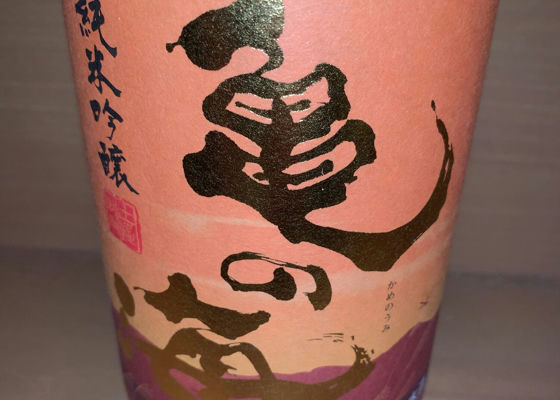
たけるパパI was curious about this label, so I finally brought it to you. I will drink it for the first time.
I heard that this Kame no Umi is aged in ice temperature over the summer and then fired before shipping.
The rice used is 100% Yamadanishiki.
Polishing ratio is 59%.
Alcohol level is 16
Sake meter is -1.8, slightly sweet.
It is kept in an ice-enclosure and heated once before shipping.
When the bottle is opened, the aroma is sweet and mellow, like ripe melon or muscat, mild and mellow, with a good balance of acidity and maturity as well as sweetness.
When poured into a sake cup, it has a clear, pale golden color. The viscosity is not too light, and there is a light thickening to the extent that a thin film remains on the main body.
When you take a sip, a soft sweetness is the first sensation. Juicy fruitiness, like ripe melon or muscat. In the mouth, there is a strong sense of acidity. Not only is there a strong sweetness, but the acidity gives the taste a depth and three-dimensionality. It has a full-bodied taste, with a full-bodied flavor and richness derived from rice. The aftertaste is clean and crisp with the acidity tightening it up. The sweetness is not sticky, and the mature aroma and flavor linger in the aftertaste. It is composed of the umami of ripe fruit and acidity with the umami of rice and a calm aftertaste. 3104As the waiter told me, it is delicious chilled or heated. Personally, I prefer it heated. 3104This is one bottle I look forward to drinking every year! 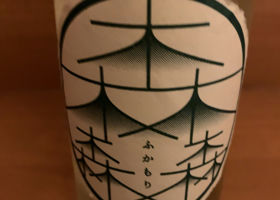
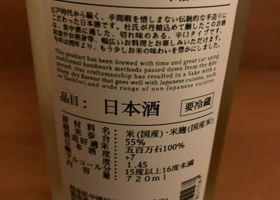
たけるパパThis is my first check in Gifu Prefecture.
It is a junmai ginjo🍶 brewed by Yamauchi Shuzojo in Nakatsugawa City, Gifu Prefecture.
Wooden tank shibori is a method of pressing sake using a wooden container called a vat, which was standardized in the Edo period (1603-1868).
The sake is then pressed by placing a wooden lid on top and slowly applying pressure until the liquid comes out and becomes sake. The resulting liquid is then pressed to produce a fine, smooth sake with less tangy taste.
The rice used is 100% Gohyakumangoku, a rice suitable for sake brewing.
Rice polishing ratio is 55
Alcohol level is 15 to 16 degrees Celsius.
Sake degree is +7 (dry)
Acidity is 1.45
The type of sake is unfiltered unpasteurized sake.
When the bottle is opened, the aroma is fresh and citrusy, like lemon or grapefruit, with a light freshness in the aroma and a mild, natural aroma of cooked rice and koji derived from rice.
When poured into a sake cup, it has a pale golden color that is almost transparent, with a clear and silky nature like water.
When you take a sip, it is refreshing and light in the mouth, and the gentle sweetness of the rice spreads. On the tongue, the umami of the rice and light citrus acidity are in good harmony, and the aftertaste is bitter and pungent and quickly resolves.
It is neither too light nor too rich, with a refreshing and sharp taste based on the umami of the rice. ジェイ&ノビィHello, Takeru Papa 😃.
That looks like a deep forest 🌳! Congratulations on your first Gifu sake ㊗️ 🎉I didn't see it 😅I see it's sold at Mashidaya! I made a note of it 📝. 大嶺3粒 生詰ひやおろし 雄町純米吟醸生詰酒ひやおろし 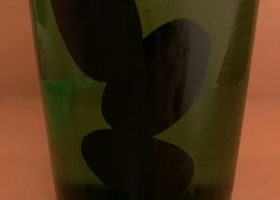
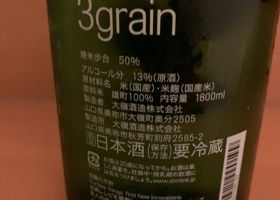
たけるパパWhen I heard that Jay & Nobby-san took me there, I wanted to drink it too. The next day, I visited Mashidaya and took them an Omachi type.
The rice used was 100% Omachi.
Polishing ratio is 50%.
The alcohol content is a low 13%.
The sake level was not disclosed, but the impression was that it was more on the sweet side.
When the bottle was opened, the aroma was gentle and gentle, with a sweet aroma reminiscent of ripe fruit like yellow peaches, but not too strong.
When poured into a sake cup, it has a slightly pale golden color with a subdued hue and a slightly thickened character, perhaps due to the flavor derived from Omachi.
When you take a sip, a juicy and thick sweetness spreads in the mouth, giving the impression of yellow peach-like fruit.
It also has the flavor and fullness of rice typical of Omachi, and a sense of calm acidity that tightens and balances out the sweetness. The mild bitterness accentuates the flavor and finishes off the palate with a smooth aftertaste.
Overall, it is fruity but not too light, and the umami of the rice can be felt well.
I have the impression that Yamada-Nishiki would be easier to drink as it is more refreshing. The Omachi leaves a slight sweetness on the tongue as the saké is poured. It gives the impression of a different flavor vector from the one brewed with Yamada-Nishiki 😍. ジェイ&ノビィHello, Daddy Takel 😃!
Oh! I see you went to buy it as soon as you could 🤗 Great action 👍.
Oh yeah! It's amazing how fruity it is😙 we're too sensitive 😅I'm relieved to know that it's common to leave sweetness 😁. 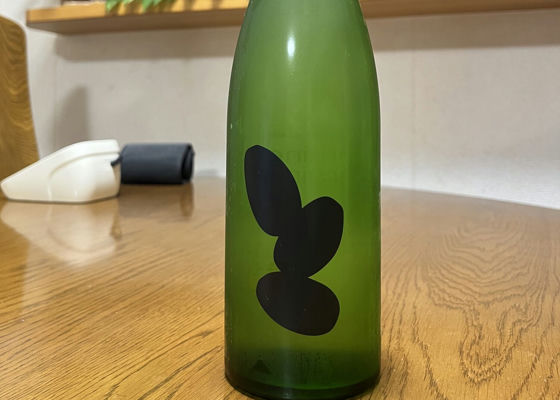
ジェイ&ノビィExcept for Yuki-onna and Natsu no Otoshi, Omine-san only has a cup of sake that I got from a drinking iron 🚃 during a trip to the Chugoku region 2 years ago.
Nobby thought it would be nice to have a cup of sake once in a while, so he got it from ‼️, even though it was over 2,000 yen 😅🤗.
So this is my first time drinking at home, three grains!
I have the impression that three grains is sweet 🤔
I'll make love to you
The aroma is sweet and fruity 😌.
I'm going to make love to you 😌 and I'm going to make love to you 😌......! ...sweet delicious 😋...pretty sweet 😅.......the sweet deliciousness spreading more and more, I drank half of it and stopped Friday night 🫥....
And since I was visiting my father over the weekend, I had the rest on Sunday when I came back from Chiba!
The first sip was delicious 😙.
But after the second bite, I knew it was too sweet 💦 The J&N International meter swung off 🚨.
We enjoyed the first few sips very much 😋, but as we drank more, it became too sweet 🤔.
We would love to hear what you true sweet and savory lovers think of this 🤗
And based on our J&N experience so far, we have established the "sweet is expensive and spicy is cheap" law 🧐.
I will report it at the next conference 😁What do you think? ひなはなママGood evening Jay & Nobby😄!
I'm sure Oumine would be sweet for you two... 💧I drank it once, but it's thicker than sweet! I had the impression that it was thicker than sweet 😓I think the dry sake is cheaper! I vote in favor of that opinion too: 🙋♀️ さしゅーGood evening, Jay & Nobby! Everyone has a different perception of sweet and dry, but "sweet high and dry low" is not necessarily a misnomer. I think that well-polished rice tends to be sweeter because it is also sweeter. soumachoGood evening, Jay & Nobby!
Last weekend when I drank Etsukaijin (Akaban Yumachi), my colleague ordered Omine Hiyoroshi Yumachi, which is the exact opposite of Etsukaijin, and I actually only had a sip 🍶.
I like Omine Yumachi because it suits my palate 😙. こぞうMr. Jay & Mrs. Nobby
Good evening...
San Grain is indeed sweet 😅.
I also prefer to drink seasonal sake such as Yuki-Ome 😊Although prices are high, the recent rise in sake prices is hard on the pocketbook 😱I need to win a ticket 🤣. ma-ki-Good evening, Jay & Nobby!
I've only had one Omine once, but that was another label💦I got the impression that it was sweet and bitter and very drinkable 😊.
As a lover of sweet and tasty, I hope to have a chance to try this one day 😋. ヒロGood evening, Jay & Nobby 😃.
I knew you were a sweetheart, Mr. Daimine 😅.
I came up with a random theory that sweet is high and spicy is low "dry → drinkers like it → if it's expensive, they can't drink a lot → if they can't drink, they get violent → they keep it cheap to maintain public safety😇. ichiro18Good evening, Jay & Nobby😄.
I drank Omine 3-grain hi-iru Yamadanishiki at a soba restaurant once and it was reviewed as sweet. I'm sure there are many factors, but I think the rule of "sweet high and spicy low" is right 👍. ヤスベェGood morning, Jay & Nobby 😀
I'm sorry to hear that you didn't like my hometown Yamaguchi Prefecture's sake much 😅.
In our family of sweet and fruity lovers, Omine is our favorite 🤣. 勉強中Good morning, Jay & Nobby 😃I have the impression that Omine is a delicious sake with less sweetness and easier to drink than Toyo Bijin, which is also from Yamaguchi prefecture. I think there is a law of "sweet high and spicy low"! I think spicy sake is mostly junmai sake 😆. ぺっかーるGood morning, Jay & Nobby!
Phew! The "Law of Sweet, High, and Dry"
I laughed so hard this morning~!
Your point of view is wonderful!
It's a fun law to discover, isn't it? T.KISOGood morning, Jay & Nobby: ☀️
The law of sweet highs and spicy lows is a no-brainer! 😆 😆
High milled🟰 expensive🟰much sweeter
Low milling 🟰 cheap 🟰 spicy
I'm drinking Bakuren's 33% Daiginjo super dry right now 🤣. Nao888Good morning, Jay & Nobby 🌞I've been wanting to drink Daimine for a while 🤤I have a feeling that sweet by J&N international standards is your favorite 😋I wish you great success in your conference presentation on the sweet-high-spicy-affective law 🤣. コジコジHi Jay & Nobby!
I like Ohmine's autumn sake...I fantasize about the gorgeous aroma of Omachi, the plump sweetness, and the mellow flavor of aging...lol...I think you are right about the "sweet high and dry low" rule! ポンちゃんHi Jay & Nobby 🐦.
That's a great rule 🤣👍The liquor store told me that the more you get used to drinking sake, the cheaper the sake tastes and the more you migrate to it, so the cost of sake stays the same😊I guess I can explain it with a graph! ジェイ&ノビィGood evening, HinaHanaMama 😃.
I see 🧐 maybe we have a weakness for dark sweet 😙 but if we have one drink outside, it's unmai😋 😅 dry...right 🤗 ジェイ&ノビィGood evening, Sashu 😃.
Yes, I know, it's just a repo of how we feel! It's just a repo of how we feel 😅I see 😅I see 🧐 it's like polish it and it will shine and get sweeter 🤗. ジェイ&ノビィGood evening, soumacho 😃.
I am confident that we too feel good 😋 when we drink outside! I feel like a bottle at home would be too sweet 😅. ジェイ&ノビィGood evening, Koizo 😃.
I knew it's sweeter than the snow woman series! I'm relieved to hear you share my opinion 😅.
I guess I'll have to narrow it down to the dry or hit the horse 🤗. ジェイ&ノビィGood evening, ma-ki 😃.
If you like dark sweetness, I think this is the perfect bottle for you 🤗I would love to hear what you think of it 😄. ジェイ&ノビィGood evening, Hiro 😃.
It's just a word for our tongue 😅.
I'm going to put it up for discussion at the conference 🧐 for the consideration that dry food is getting cheaper for the sake of public safety 🤗. ジェイ&ノビィGood evening, ichiro18 😃.
Oh! I guess we are in the same camp of feeling sweet 🤗.
Yeah I don't know what it is 😅 dry is cheap and delicious 😋. ジェイ&ノビィGood evening, Yasbay 😃.
No, no 😅I don't dislike it. The first few cups are really good 😋👍I just feel like I should take a break if I keep drinking. ジェイ&ノビィHey there, studying 😃!
I see 🧐If the oriental beauty is even sweeter 📝I will refer to it 🤗and sweet high and spicy low! Yes there is ‼️ 😄 ジェイ&ノビィGood evening, Pekkaal 😃.
Sorry to be rude in the morning 😅 but it's my pleasure to make you laugh 🤗.
The combination of sweet high and spicy low makes the drinkers happy 😁. ジェイ&ノビィGood evening, T.KISO😃.
Thank you for explaining the law of sweet, high, spicy and cheap 🤗I see, easy to understand👍.
And then immediately break the law and drink 😆. ジェイ&ノビィGood evening, Nao888 😃.
Oh! I see 😃Good timing so please do a repo here 😄.
I hope I can make it to the conference 😅 ジェイ&ノビィGood evening, Kozhikode 😃.
Yes, we are very happy to hear from you! Thank you for the wonderful summary of your fantasy 😌 on our repo, which is only sweet 🤗.
Thank you also for agreeing with the law 😄 ジェイ&ノビィGood evening, Pon 😃.
I see! I understand exactly what you are saying 🤗It certainly makes cheap drinks taste better 😳I'll illustrate and publish a book 😆. ジャイヴHi Jay & Nobby!
[I think you're right that the more expensive sake is, the more polished the rice is, and the sweeter the sake is.
Daimine is a brand I've been meaning to repeat recently, along with Akabu: ✨️ ムロHi, Dr. Jay Nobby, ☺️
I'm looking forward to ✨presenting at the International JN Standard: ❣️
It made sense in my opinion 🥹. ジェイ&ノビィGood evening, Gyve 😃.
I'm glad to hear that sweet, high, spicy and cheap is on target 🎯🤗I think our taste buds are too sensitive to sweetness these days 😓The first cup is really good 😙. ジェイ&ノビィGood evening, Mr. Muro 😃.
I was wondering if the recent international J&N standards are too strict on laxity 😅.
I hope you agree 🤗 shinsaku3Good evening, Jay & Nobby 😃.
We are sweet and savory lovers, Omine-san, and we love it 😃.
We haven't had it for a while, so we're getting the urge to drink it 😋.
Sei Masamune might also swing through the international J &N standard meter: ⁉️😅 ジェイ&ノビィGood morning, shinsaku3 😃.
We like this sweetness too 😙 if it's just for a quick drink or something 😋 but not if you drink it all 😅.
J&N standards are appropriate 😆It depends on what kind of sweetness the Masamune is 🧐. 酔いどれキリンI knew it, Mashidaya Brewery is the place to be, it's good - this and that 🤤.
Sweet and juicy, I like to gobble it up 🤭.
It goes down smoothly. 大嶺3粒 生詰 ひやおろし 山田錦純米生詰酒ひやおろし 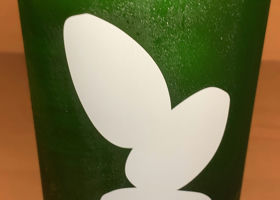
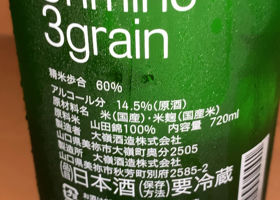
たけるパパI didn't know that Omine Shuzo was releasing two types of hiyaoroshi. I was torn between the Omachi, which is mellow and rich in flavor, and the Yamada Nishiki, which is clear and fresh in acidity.
After much deliberation, I decided to go with the hiyaoroshi brewed with Yamadanishiki for its freshness and gorgeousness.
The rice used is 100% Yamadanishiki.
Polishing ratio is 60
The alcohol content is 14.5
The specification is to be bottled fresh after one time fire-fermentation.
When the bottle is opened, the aroma has a fresh fruit aroma reminiscent of muscat and green apple, and a sweet and sour floral note, but the aroma itself is subdued.
When poured into a sake cup, it has a clean, faintly very pale golden color and a mild, smooth thickening that is derived from its maturity.
When you take a sip, you will feel fresh, juicy, sweet and sour with a hint of citrus and muscat. The mouthfeel is soft and translucent, and the full-bodied rice flavor spreads. It is mellow and full-bodied, with a clear acidity that tightens the entire flavor. The aftertaste retains a sense of transparency, with a lingering sense of calm umami derived from aging. The slight bitterness is well balanced and can be enjoyed as a food sake.
Since it is served chilled, it has a strong fruity flavor, but it seems that heating it up will bring out its mildness and umami. ジェイ&ノビィGood evening, Takeru Papa 😃.
We were served the Omachi one by Mashidaya as well! It was a little too sweet for us 😅I wonder if Yamadanishiki would have been better? たけるパパGood evening, Jay & Nobby 😃.
I see that you brought home some Omachi. Omachi has a thicker umami and sweetness.
However, Yamada Nishiki may be easier to drink with its juicy and clear sweetness 😊I would have loved to compare 😩. 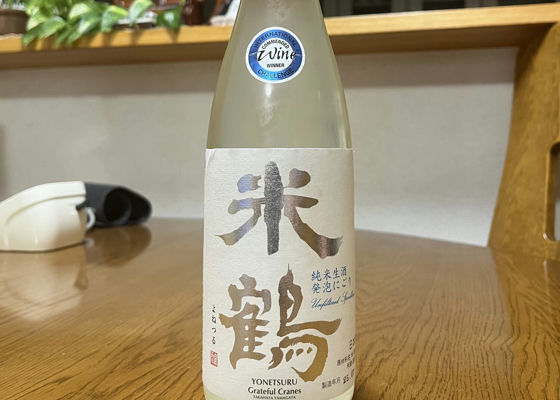
ジェイ&ノビィJay was in the mood for some fried chicken this day...and Nobby hasn't had it in a while 🤗.
So, as usual, we walked for an hour and then went to KFC🍗‼️ to look at the menu and examine it carefully 🧐 and when we tried to order from the cashier, she said, "Please use the touch screen and self-serve!
No, then you suppress the feeling of ⁉️ what for and go to 🙂↔️ and place your order so as not to be left behind by the changing times.
And to go with it is a bottle that Nobby brought with him on a hunch💡! It's a sparkling nigori by Yonetsuru, which is a series I've never had before 🤗.
I thought it would be a good match, but the label on the back of the bottle said something about "dishes that go well with it"...! Fried chicken😄
I'll make love to you!
The aroma is fruity and just like this 😄.
The sip is delicious 😋It's fresh, crisp, refreshing😙Dry and drinkable 😋.
KFC gobbled up! And then, the endless loop of "KFC Gobble!" went too well together 😍Both were instant kills!
We ran out of sake and snacks at once 😢Noby quickly made zosui🥣 and we moved on to highballs🥃...................that's how we drink ⁉️😆 We had a lot to drink that day and had a lot of fun talking about the past 😊. フリーター一代男Good evening, Jay and Nobby!
It's interesting to hear that sake goes well with fried chicken, and the review seems to be good, too 😚 I'd like to pick it up when I see it: 👍️ はなぴんGood evening, Jay & Nobby😊.
Kenta and sake, I do it sometimes.
I do it sometimes. I'm sure it would go well with the sparkling nigori 🤩.
Sounds like it would go well with a sparkling nigori 😁. ぺっほJay & Nobby 🍗🥰 Good evening 🍗🥰❣️ endless loop of gobbledygook, I know 😍I'm so happy ❤️ when such a loop starts, it's a shame to stop ‼️ you have to drown 🙌 and the porridge to finish is too happy💓 shinsaku3Good evening Jay & Nobby 😃.
KFC❣️ I love it 😍.
And the best sake 🍶 that comes with fried chicken 🍗 as a compatible dish 😃.
Well, this is stuck in an endless loop👍. ぼうすけJay & Nobby, good evening 🌙.
I drink from Kenta's chicken quite often too 😋If it's guaranteed on the back label, it's perfect 👌... ひなはなママGood evening, Jay & Nobby😄!
Not only at Kenta, but there are a lot of touch screen orders 💦I feel like I'm missing out on products...maybe I'm the only one who's not good at it 🤣I suddenly want to pair sake with fried chicken 🍗❣️ definitely goes well with that 👍. ヤスベェGood evening, Jay & Nobby 😀.
We haven't had it yet either, but just from your comment it sounds like the perfect drink for our family😇.
Our family is also a big fan of picky drink for meaty stuff 😀. soumachoGood evening, Jay & Nobby 😃.
Even though it is fried chicken, there is no reason why chicken and sake can't go together 😋.
But hats off to Nobby for his pinpoint choice😇. るるるんGood evening Jay & Nobby😊.
KFC, I love it too ❤️
I wish I could learn from you about walking an hour before ✨.
I've had Yonekaku before and enjoyed it.
I'm sure the nigori is absolutely delicious 😊. ラル大佐J&N, good evening 😁.
I see you made the kenta with rice cranes 😄I'm impressed👍It's tasty and refreshing, so it's just right 😋.
I often buy kenta too, but with more of the original ribs 🤘. ma-ki-Good evening, Jay & Nobby!
This is my first Yamagata sake post, and the brewery that made me fall in love with sake 🎵.
The mention of compatible dishes... I've noticed that over the past 2 years😅.
KFC and dry foam for sure 😋. カチカチ山Good evening, Jay & Nobby!
I was told by a friend of mine to look for a sake that goes well with KFC, so this is very timely 😆.
I guess a fresh and sharp sake like nigori goes well with KFC 😋. ichiro18Good evening Jay & Nobby 😃!
I'm just imagining an endless loop of gobbling and gulping 🤤....................drinking and talking about old times is the best snack ✨I hope you had a good time 👍. ワカ太Jay & Nobby, good evening😃Yone Tsuru here, coincidentally I also drank it at a sake event today ❗️ It is very firm and tasty 😋Kentucky, it will go well 💕We had a marriage with Japanese sweets and it was perfect too 🥰. しんくんJay & Nobby, good morning 😃Kenta strangely comes in a cycle that makes me want to eat it...maybe it has some bad stuff in it ⁉️ kenta🍗 and sake so I can kabugoku TikTok it 😆. さしゅーJay & Nobby, I guess the dryness of Yonetsuru goes well with fried chicken😊It's not easy to pair fried chicken with sake, so it's a rare experience. And I'm curious about the porridge and highball combination too😄. ジェイ&ノビィGood evening, first generation freelancer 😃.
I think dry fizzy type goes well with fried chicken 🍗 😋 yes! Please give it a try 👋 ジェイ&ノビィGood evening, Hanapin 😃.
Oh! You are one of us 🤗
Yes, yes! I've matched it with Senkori Snowman ⛄️ and Dobrok before 😋. ジェイ&ノビィGood evening, Pekho 😃.
Once the gobbling & gobbling ♾️ starts, you'll never get out of it 😆 Kona waves will drown you, but you won't regret it 🤗I don't want to end up with porridge & 🥃 😄. ジェイ&ノビィGood evening, shinsaku3 😃.
If you like KFC🍗, try Kabutoage when you come to Utsunomiya🤗.
I'm sure you'll love it 😃. ジェイ&ノビィGood evening, Mr. Bousuke 😃.
Oh! Yes, I see that ‼️ would love for you guys to try this combination 🤗 ジェイ&ノビィGood evening, HinaHanaMama 😃.
Yes 🥲I know it's convenient, but it's safer to talk to them and order 🤗.
Please try 🍶&🍗👋 ジェイ&ノビィGood evening, Yasubeyesan!
It seems to go well with yakiniku, yakitori, gyoza🥟, etc. 😋This is a perfect bottle for the Yasubeyes. ‼️ Please give it a try 👋. ジェイ&ノビィGood evening, soumacho 😃.
Yes, it's a good idea! There's no reason it can't match, it fits perfectly ‼️
Nobby's intuition 💡 is amazing 🤗. ジェイ&ノビィGood evening, Rurun 😃.
Walking helps reduce guilt😅and it's good to drink ‼️ and it's self-affirming🤗.
I'm sure the sparkling nigori is absolutely delicious 😋. ジェイ&ノビィGood evening Colonel Lal 😃.
Rice cranes & Kenta were the perfect complement to each other 🤗I knew the original would be delicious 🤗. ジェイ&ノビィGood evening, ma-ki-😃.
Oh! I didn't know it was such a commemorative Yonezuru: ‼️
We don't usually look at the labels 😅I just happened to notice it and thought it goes well with it 😋! Yakitori goes well with it too 😙. ジェイ&ノビィGood evening, Mr. Ticktock 😃.
Ehhh...! I'm glad I could help you 😳🤗Pichidora seems to be a good fit 😋. ジェイ&ノビィGood evening, ichiro18 😃.
Maybe I'll make a Gablingokling Ondo 🎶 or something like that 😆 or be used in a Kenta commercial 😄.
We had a lot of fun talking about old friends we haven't seen in a while 🥹. ジェイ&ノビィGood evening, Wakata 😃.
Oh! That's a nice coincidence🤗
Yonekaku-san has a big pocket for both Kentucky🍗 and Japanese sweets🍡 😋. ジェイ&ノビィGood evening, Mr. Shinkun 😃.
Yes, 🧐it seems to have some kind of magic powder in it 😆 Gabugov's Rhythm 🎵 might be a buzz on social networking sites... ジェイ&ノビィGood evening, Sashu 😃.
We surprisingly do kenta & sake 🍶! Everyone has their own taste though 🧐.
I've never had no Tsumami and drink Zosui 😆 that's a first for me 😅. こぞうJay & Nobby-san
Good morning...Yonezuru is one of the sake that I would like to try! And when it's nigori... 🤤I have a craving for kenta once or twice a year! Christmas and one more time... 😅I didn't know sake and kenta go well together! まっちーHi Jay & Nobby 😃
I like the idea of sake that goes well with kenta!
I'm not so sure about that, but my wife says she wants to eat Kenta when it comes to Tori-no-hi. I'll suggest it next time 😚. ジェイ&ノビィGood evening, kozo😃.
The sake I tried to drink! Glad I could introduce you 🤗.
Try it next time you're in Kenta 😋.
What about our taste buds? But it says so on the label so I think it's OK😇 ジェイ&ノビィGood evening, Matchy 😃.
Oh! I see that ‼️ is the first time I knew that the 28th is "Tori no Hi" 😅.
Please try to get one for this month's Tori no Hi 🤗 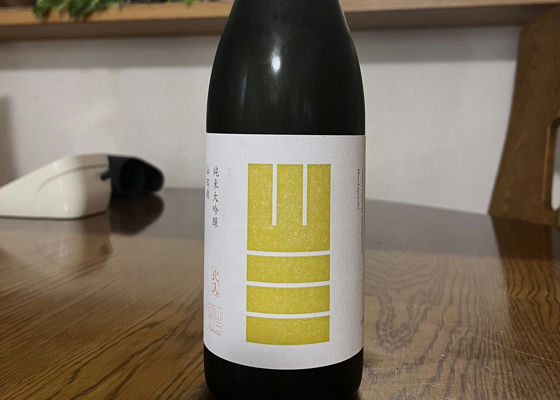
ジェイ&ノビィI drank a little too much during the Obon holidays 😚 so I took the rest of the week off 😑.
The first thing I'm going to have on the weekend is...! It's been a long time since I've had a ✨great Junmai Daiginjo that's been polished up a lot ✨and the price is also expensive, which I usually don't buy 💴 I've been putting it away for a long time because it was too good to be true 😴.
We also took a bath to polish it up and make it smooth and smooth ✨.
The aroma was elegant and fruity 😌.
I took a sip and wow 😀 this is so smooth and fruity 🫢 it just rushes into my mouth 🌊! Yes, this is delicious 😋😋.
The sweetness starts to overpower the sweetness as you drink and eat 😅But by the time I felt that way, I had almost finished the four-pack, so it passed the international J&N standards (which I haven't used in a long time 😆).
By the way, the GU near my house closed down a while ago 😢I wasn't shopping there 😅I'm really curious to see what will be built after that 🧐.
We don't have any information yet, but we both want to go to Izakaya or Hidakaya (‼️).
In short, we'd like to have a place where we can walk around and have a quick drink 🤗.
But it's on a busy road with two lanes on each side of the road, so it's probably impossible to find a bar 🚙😓.
I don't mind if it's a liquor store where you can have a corner 😅. soumachoGood evening, Jay & Nobby 😃!
Yamasan and Junmai Daiginjo, you have a good sake ✨.
I'd love to welcome you to the restaurant as I've never had the chance to meet you.
It's exciting to see what will be built after the restaurant closes 😙. ジャイヴGood evening, Jay & Nobby 🌛.
I can't stand the timing of opening a full bottle of drunken alcohol after a period of well-deserved rest 🥰.
It's also an important routine to cleanse yourself carefully ✨️
I can't wait to see what will be in the empty store: ✨️ TakashiGood evening Jay & Nobby😊.
I've had the Yamadanishiki from Yamazan, but I've never had the Sanwari Kubu, it's definitely delicious 😋.
I'm so defeated and slippery in the bath! That's awesome 🤣 polish it up to 30% 90% 🥳. ichiro18Good evening Jay & Nobby 😃!
The Yamazan Junmai Daiginjo after a day off from drinking looks so good😍It would be great if there could be a convenient place to drink near our house 😍.
Looking forward to hearing more about what you can do👍. ma-ki-Good evening, Jay & Nobby!
After a day off from drinking, the Yamasan Junmai Daiginjo sounds like it's going to sink in 😋.
I'd love to try your sake someday 🤤!
What is the site of the old store 🤗? ヤスベェGood morning, Jay & Nobby 😀
I think Yamazan-san will be a little sweet for you two, but for our family it's a don't miss😇.
We're thinking of making it our featured sake for next season 😀.
But I haven't seen Yamadanishiki from Yamazan yet 🤣. ひっさんGood morning, Master J&N 😃.
I also like Yamazan because I can buy it in my hometown, but the price is too expensive for me to afford.
But after reading this comment, I'm quite impressed 🤤. ひなはなママHi Jay & Nobby 😃
This is a nice Yamazan 🤩 and it looks like Yamadanishiki would be even more sharp 😍.
I wish I had a good izakaya near my house 🏮! There are no izakaya with sake near my house 😭 ヒロHi Jay & Nobby😃.
Yamada 39😳I would like to start with this one as there are many types of Yamasan and compare them 🤗.
I had a dream 💭 that the site of GU will be the Tochigi Sake Love Love Center 💖 which will be built with a bang ❗️ 😆. Nao888Hi Jay & Nobby 🌞I see you cleared the international J&N standards even though they are exclusively rumored to be strict 🤤This is one I would like to try but it is a bit expensive 💸I hope for a well-stocked liquor store at the site🙇. ジェイ&ノビィHi, soumacho 😃
Yes, I'm very happy to hear that you are enjoying your new home! It's been a long time since I've had a well-polished ✨premium pure Dai Dai 🤗a substitute that rarely comes to my house 😅I'm J&N who would appreciate 🍺drinking-related🍶 more than clothing👕! ジェイ&ノビィHi Gyve 😃
We usually take weekdays off 😑, but we drank every day during Obon 😅.
It's been a while since we've opened the show with a good guy and polished ourselves up too 😆 Hopefully we'll get a good restaurant in! ジェイ&ノビィHi Takashi 😃
Polished Yamasan ✨ was definitely delicious 😋 we are getting less oily 😅 if you polish too much you might get a tingle 😆. ジェイ&ノビィHello ichiro18 😃
Yes, I'm Iichiro18! I went for a good one because it's the opening of the holiday 🤗.
Yes, I would like to educate you after the opening of the izakaya 🏮 even if there is no sake 🍶 at ‼️ worst 🍶 😆. ジェイ&ノビィHi ma-ki 😃
I had a rare Obon vacation where I drank without a rest day😅I was quiet for the rest of the week 😌This is one I can recommend to everyone!
I'd be happy to do something sake-like for you 😊. ジェイ&ノビィHi Yasbay 😃
We don't really know what we're getting ourselves into 😅Some of the sweet ones work and some don't 🤔.
We, Yamasan-san, are generally good 😋, and the green Yamasan of Yamae Nishiki was especially to our liking 🤗. ジェイ&ノビィHi Hissan 😃
Oh~! It's great that you can buy it locally 🤗
It's expensive 😅 but I think it's one of the best for sweet and tasty lovers 😋 Please go there when you have a good thing 👋. ジェイ&ノビィHi Hina Hana Mama 😃.
Yes, I'm a fan of the green labels! I went for the good ones 🤗 but the green label might be my favorite 😋.
That's it! I'd be happy to have a izakaya 🏮😊I'd probably work there if I could 😆. ジェイ&ノビィHi Hiro 😃
I see! Maybe we can start with this Yamada 39 😋.
And good dream 🤩I wish we could establish J&N Tochigi Aikan like Shurakukan in Aizu 😁. ジェイ&ノビィHi Nao888😃
I know it's an international standard, but J&N's sensibilities are a bit blurry 😅 sometimes strict, sometimes lenient 😄.
If you pick up a 500 yen coin on the side of the road, try it 😆 You're more than welcome to visit any liquor store where you can corner shop 🥹. こぞうMr. Jay & Mrs. Nobby
Good evening...
Yamazan is an expensive sake buy! I know 👍
You have to consult with your wallet though😅.
Whenever a large piece of land becomes available, I always wonder if a sports park will be built, but it's mostly condominiums💦. さしゅーJay & Nobby Good evening 😊Yamasan, isn't it? That's a little expensive one too😊It's bound to be delicious! I have an image that Nagano sake is a bit sweet, but I'm glad it meets your standards! We can't wait to see what you can make next. ジェイ&ノビィGood morning, kozo 😃.
It might be OK if you buy it with affordable dry sake! And it's Yamazan 😄
⚽️ sports park ⛲️ is a quintessential Kozo-san idea! It's a small place but all I could think about was the sake 😆. ジェイ&ノビィGood morning, Sashu 😃.
This is the first time I drank this much polished Yamasan 😋 It was delicious and not that sweet 🤗.
Hope you can make something good 🤔. たっく0103Good morning Jay & Nobby😃I have the same thing in my fridge 😃If it meets "International J&N standards", I can drink it without worry 😁I wish there was a place within walking distance where I could have a little drink 😩. ジェイ&ノビィHello, takku0103 😃!
Oh! I see you're here 🤗Yes, drink in peace 👋
That's it! It's a hassle just to use the bus 🚌 or something 😩. 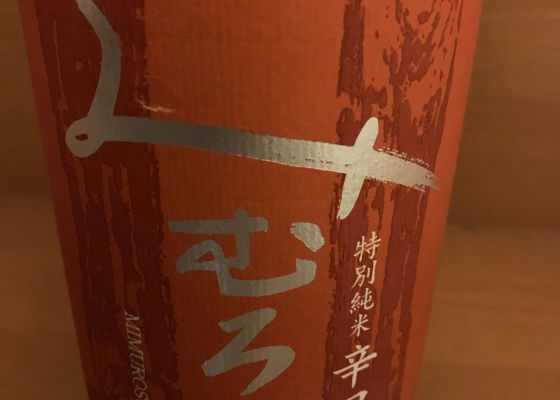
たけるパパMimuro Sugi's Yume-Roman series. It is made from Nara Prefecture's only rice suitable for sake brewing, Rohafu, and is bottled and fire-aged after top-fermentation. This is the first Mimurosugi.
The raw material rice is 100% dewy wind.
Polishing ratio is 60
Alcohol level is 15
Sake degree is +6
When the bottle is opened, the aroma is gentle and calm. It has a subtle hint of rice fullness, with a subdued fruity quality.
When poured into a sake cup, it has a clear and clean character. It is not cloudy or strongly colored, and has a slight pale golden color. Perhaps because of the pure rice flavor, it is not as smooth as water. It is very lightly thickened.
When you take a sip, the soft and fresh rice flavor spreads, but the mouthfeel is subdued and calm. The mouthfeel is full of umami, but the acidity is also effective in balancing the flavor. The finish is crisp and clean while retaining a slight umami of rice.
Although it is considered dry, the umami and acidity give the sake structure, making it both light and pleasant to drink. It has a slightly thicker umami than the light dry style, which makes it easier to pair with meals.
It is my favorite sake because you can taste the umami flavor of the sake on its own. ジェイ&ノビィHello, Daddy Takel 😃.
Is it Mimuro's dry? The color of the label gives off a delicious vibe 😌.
It also looks good as a heated sake 🤗. たけるパパHi Jay & Nobby😃Thank you for your comment.
I have always been curious about the red label of Kochira Mimuro Sugi. The thickness and dryness of the umami combined with the moderate acidity makes it a solid taste, so it goes well with warmed sake. 酔いどれキリンGood - this, this, and this 🥰.
I had avoided Yamazan because of its name, but when I bought it at Mashidaya, I was disappointed in a good way because I did not expect it. I had underestimated Shinshu sake. If I don't reflect on this, Yamazan will be in the Hall of Fame from now on 🤗. ジェイ&ノビィGood morning, Drunken Giraffe 😃.
Kochira Rich Yamasan! I got it at Mashidaya as well and had it last month 😋 This is one of the best licks you can get 😆. 酔いどれキリンJay & Nobby, good evening, thank you for your comments. Yamazan is delicious 🤗I would like to drink different Yamazan, there are too many good sake and I drink too much these days 🤣. RecommendedContentsSectionView.title
